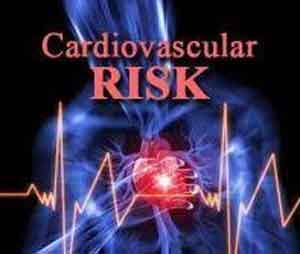- Home
- Editorial
- News
- Practice Guidelines
- Anesthesiology Guidelines
- Cancer Guidelines
- Cardiac Sciences Guidelines
- Critical Care Guidelines
- Dentistry Guidelines
- Dermatology Guidelines
- Diabetes and Endo Guidelines
- Diagnostics Guidelines
- ENT Guidelines
- Featured Practice Guidelines
- Gastroenterology Guidelines
- Geriatrics Guidelines
- Medicine Guidelines
- Nephrology Guidelines
- Neurosciences Guidelines
- Obs and Gynae Guidelines
- Ophthalmology Guidelines
- Orthopaedics Guidelines
- Paediatrics Guidelines
- Psychiatry Guidelines
- Pulmonology Guidelines
- Radiology Guidelines
- Surgery Guidelines
- Urology Guidelines
Belly Fat despite normal BMI increases cardiovascular risk

People with a normal weight but a fat belly have more chance of heart problems than people without a fat belly, even if they are obese, according to BMI. Doctors should measure central obesity to assess cardiovascular risk even in patients with normal BMI.
Body mass index (BMI), which is weight relative to height in kg/m2, is used to categorize adults as underweight, normal weight, overweight or obese.
Dr Jose Medina-Inojosa and colleagues conducted Study to evaluate the hypothesis that people with normal weight and central obesity would have more heart problems than people with normal weight and normal fat distribution.Central obesity is a store of excess fat around the middle of the body and is a marker of abnormal fat distribution
The researchers found that participants with a normal BMI (18.5-24.9 kg/m2) and central obesity had an approximately two-fold higher long-term risk of MACE compared to participants without central obesity, regardless of their BMI.
In 1997 to 2000 the study enrolled 1,692 residents of Olmsted County, Minnesota, aged 45 years or older. The sample was representative of the county population for age and sex. Participants underwent a clinical examination and measurements were taken of weight, height, waist circumference and hip circumference. Central obesity was defined as a ratio dividing the waist circumference by the hip circumference of 0.90 or above for men and 0.85 or above for women.
Patients were followed-up from 2000 to 2016 for the occurrence of major adverse cardiovascular events (MACE) using linked medical records from the Rochester Epidemiology Project. MACE was defined as heart attack, surgical or percutaneous coronary revascularisation to open blocked arteries, stroke, or death from cardiovascular causes.
Dr Medina-Inojosa said: "If you have fat around your belly and it's greater than the size of your hips, visit your doctor to assess your cardiovascular health and fat distribution. If you have central obesity the target will be waist loss rather than weight loss. Exercise more, decrease sedentary time by taking the stairs or getting off the train one stop early and walking, increase your muscle mass with strength and resistance training, and cut out refined carbohydrates."
Dr Medina-Inojosa said it was important for doctors not to assume that people with a normal BMI are not at risk of heart problems or that their fat distribution is normal. He said: "Our study provides evidence that doctors should also measure central obesity to get a better picture of whether a patient is at risk."
The study has been published in Journal European Society of Cardiology

Disclaimer: This site is primarily intended for healthcare professionals. Any content/information on this website does not replace the advice of medical and/or health professionals and should not be construed as medical/diagnostic advice/endorsement or prescription. Use of this site is subject to our terms of use, privacy policy, advertisement policy. © 2020 Minerva Medical Treatment Pvt Ltd